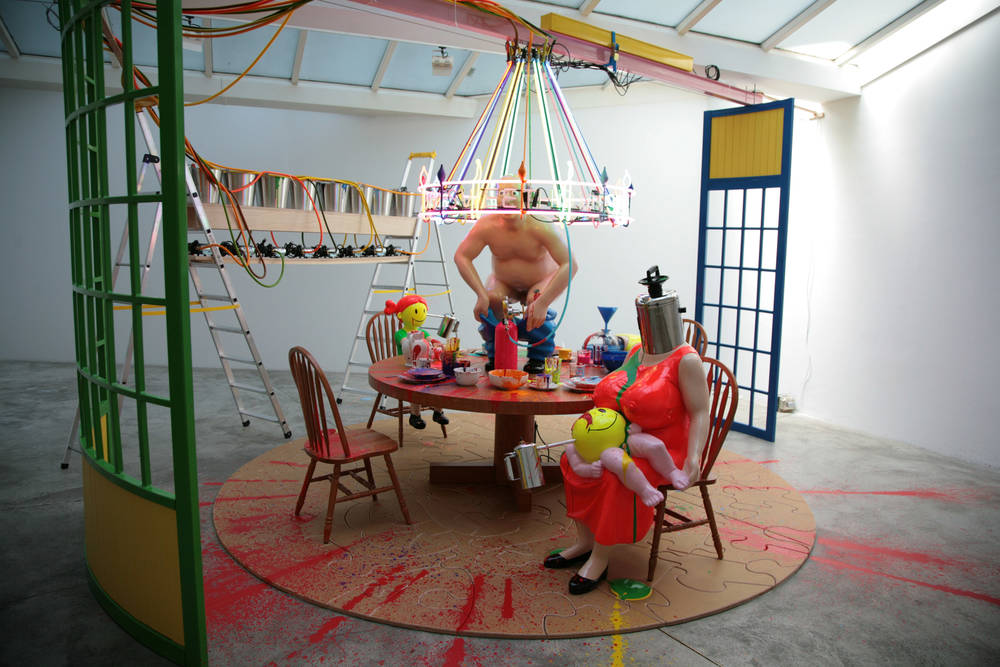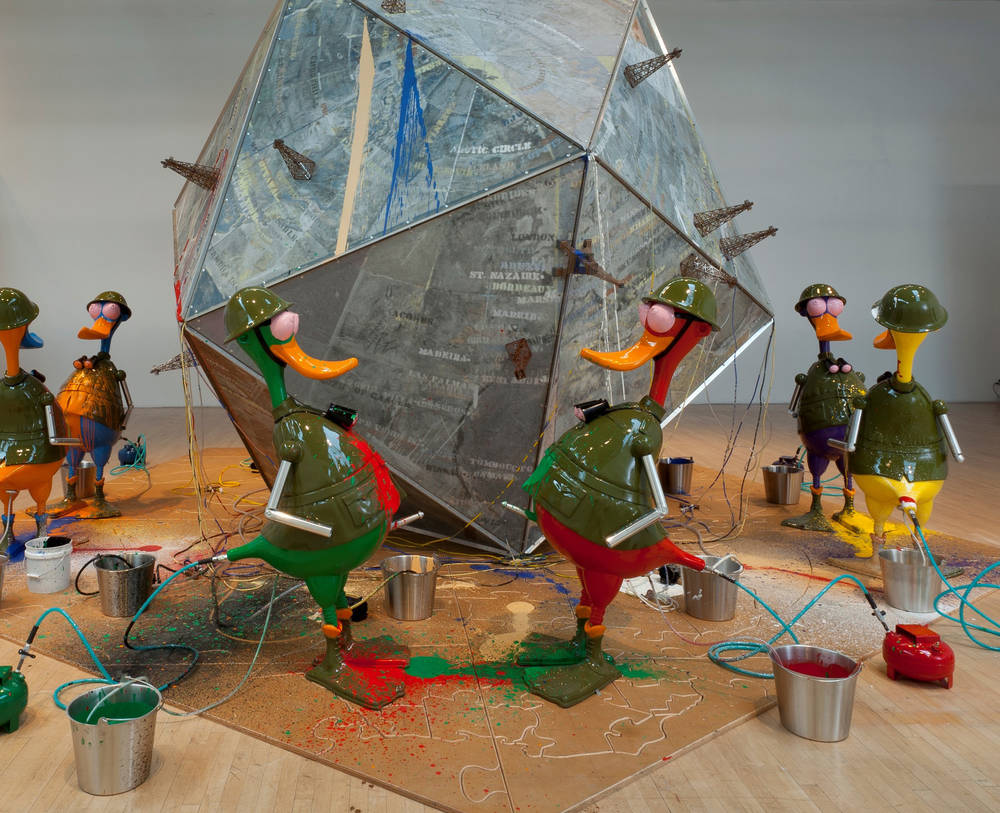More than any other artist of his time, Richard Jackson has focused his attention on the radical expansion of painting. The Schirn is presenting a selection of his “Rooms” for the first time in an exhibition.
The American artist pushes the formal boundaries of the picturesque and creates situations, which link the application of the paint through the use of machines to its processual aspect. From February 6 to May 3, 2020, the Schirn Kunsthalle Frankfurt is assembling for the first time five of his altogether twelve characteristic “Rooms”—room installations based on the principle of automated painting.
Some are viewable from all sides, others only through windows or peepholes. The exhibition provides glimpses into Jackson’s “Rooms.” He combines critical commentary on painting with social contexts, pairing this with provocative wit and ambiguity, as well as references to iconic works by artists such as Marcel Duchamp, Robert Rauschenberg, and Jasper Johns.
Inside the rooms, comic-like figures, animals, or objects become the protagonists in a unique process: air compressors and pumps cause rich colors to flow through tubes and funnels, through ears, mouths, and other body orifices, and spread them across the floor, walls, furnishings, and the protagonists themselves. The thematic rooms document a painting process that is detached from the artist and expands into the spatial. By the time visitors enter the space, it is all over. They become the investigators of the previous spectacular painting act, and voyeurs of bizarre scenarios. The prototype of Jackson’s “Rooms” is the no longer preserved work “The Bedroom”, created as an experiment between 1976 and 1982.
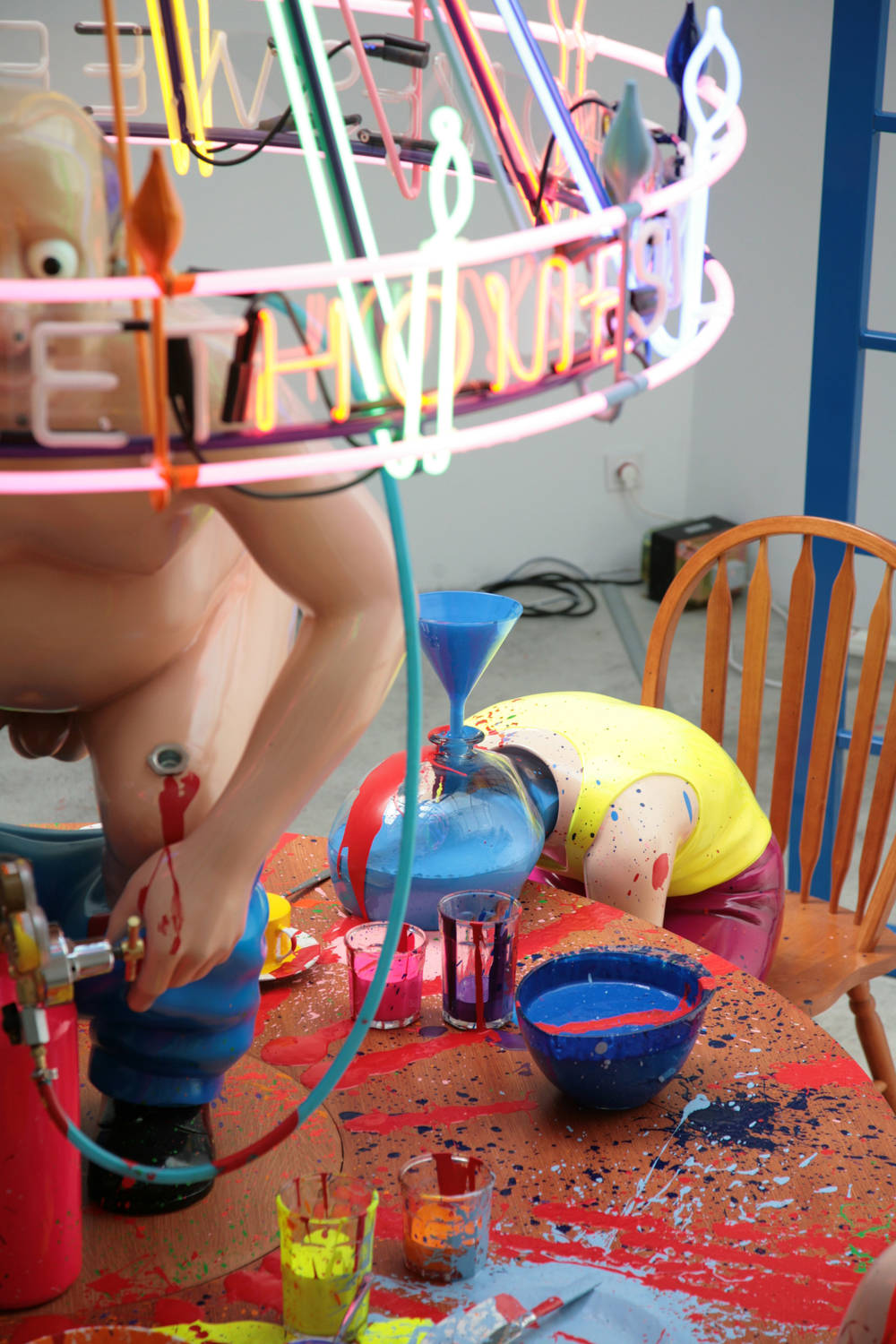
The Schirn presents the later remake of the work “Bed Room” (2002). Jackson reduced the amount of furniture in the room, while the act of painting was now performed by the bed filled with paint. Elevated by a rotating lift, the bed distributed it in a circle on the ceiling. Similarly, Jackson developed “The Maid’s Room” (2006–07) as a result of an in-depth examination of a work of art: Marcel Duchamp’s iconic piece “Étant donnés” (1946–66). In his reinterpretation, Jackson changed elementary motifs. Nevertheless, Jackson retained the key aspect, namely, the voyeuristic and simultaneously restricted perspective of the viewer through a peephole or narrow window gap onto the naked body of a woman with legs akimbo. Jackson’s work is a reference to a tradition of artistic representation, whereby the female genitals serve as a metaphor for the pleasure of looking as well as for creativity itself.
This aspect is echoed in “The Delivery Room” (2006–07), a warlike birthing scene with a woman giving birth. Around her we see babies, abdominal prostheses, paint buckets, and also paint explosively dispersed throughout the room. A man uses his camera to film the event, which is transmitted to a monitor outside. It is only from there, or through a small round window, that viewers can get a glimpse of the action. The harrowing portrayal of the birth is also a reference to the efforts of artistic creation. At the same time, in its comically savage staging, it dismantles a heroism of painterly creation that was celebrated not least in Abstract Expressionism.
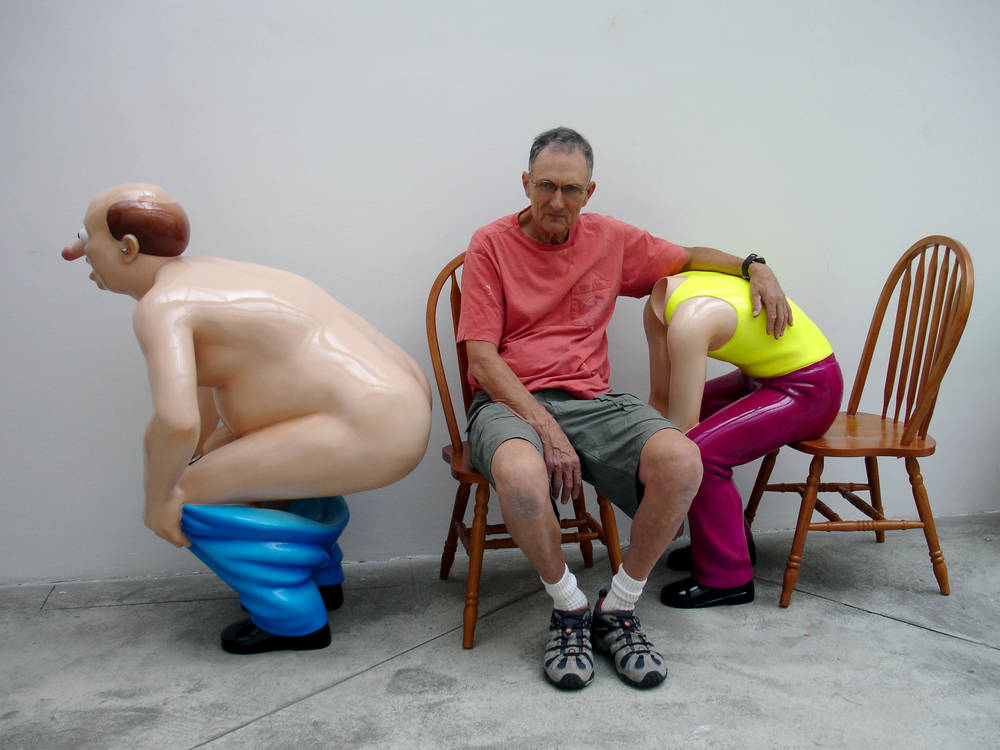
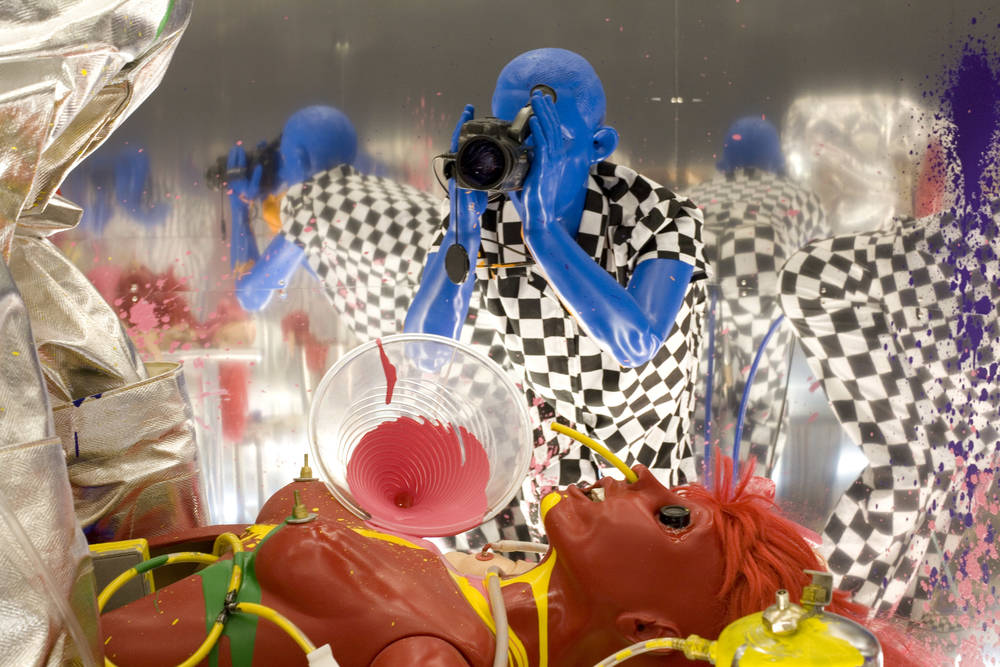
“The Dining Room” (2006–07) depicts another grotesque family portrait placed by Jackson in a room that can be viewed from all sides. On top of the dining table in the center, with his trousers lowered, the father squats and literally vents his displeasure. Colorful paint is spread across table, dishes, floor, and the rest of the family members who apathetically attend the scene. Paint runs through funnels and canisters into their heads, only to flow out again elsewhere and spread throughout the room. Above the table a chandelier announces “HOME SWEET HOME” in flashing neon letters.
The setting of the installation “The War Room” (2006–07) is a political battlefield. Figures of ducks, dressed in military uniforms and with breasts as eyes, stand in pairs facing one another around a globe and have splashed each other with paint; two further copulating figures are hiding inside it. The world map refers to a Map patented by Richard Buckminster Fuller; with twenty equilateral triangles, it allows a proportionally correct representation of the continents. Jackson shows them peppered with miniature drilling rigs that ultimately expose the war scene as a battle for dwindling resources.
